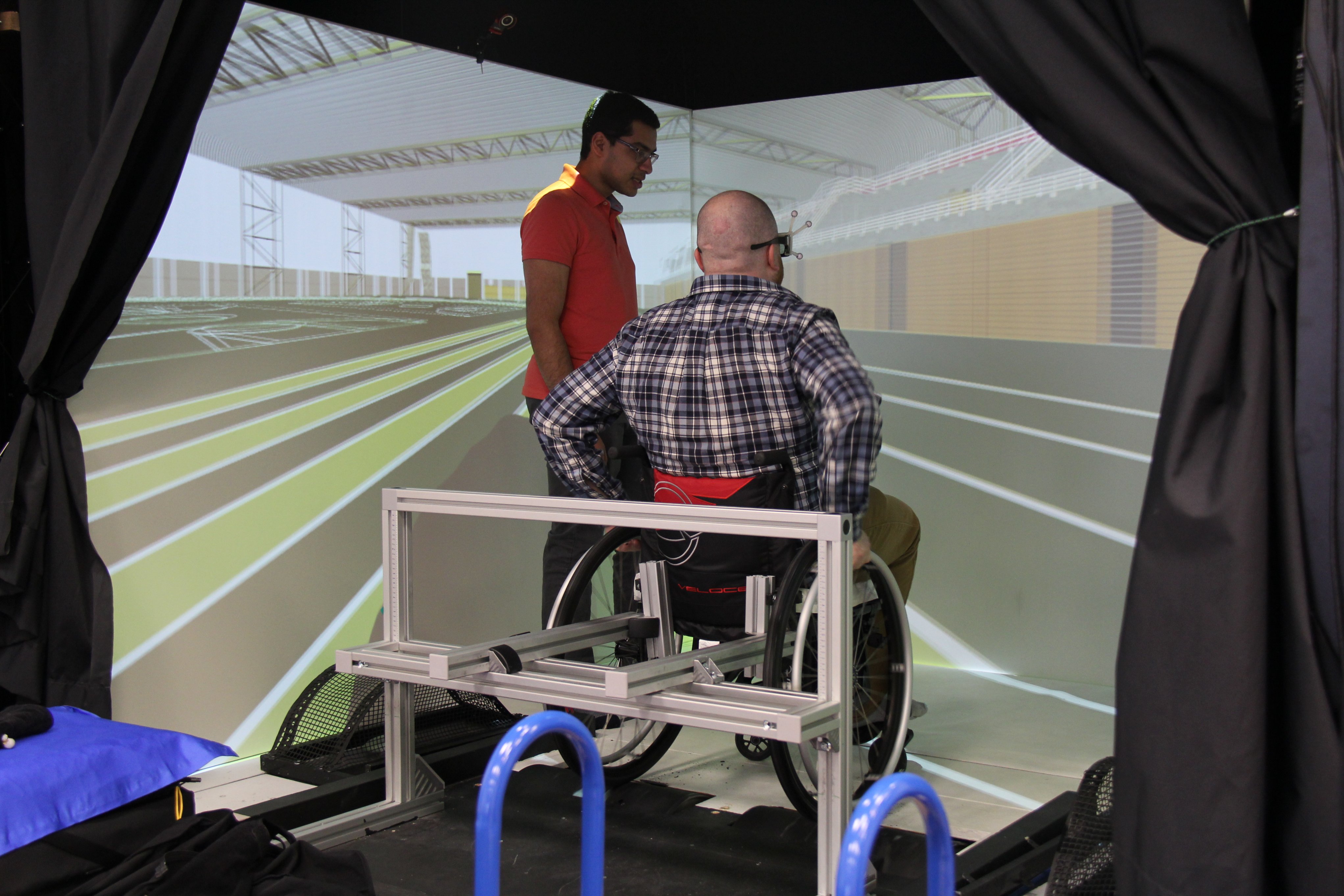
(Edmonton) If you grew up with siblings or cousins, you know that sharing was often a tactical negotiation. If you didn't get the biggest piece of the pie, no one else would.
As children, John Johnson and his twin brother Peter figured out a system of fairness and equality to divide their pieces. One would cut, the other would choose pieces.
Unfortunately, as Johnson notes, equality isn't as simple in the real world. We all have different challenges, and for some, these challenges create incredible barriers. "This is true for wheelchair users. It is physically and mentally taxing for them to get around in spaces that are not built for wheeling."
Johnson, who earned his degree in honours physiology from the faculties of medicine and science, is now working toward his Master's degree in biomedical engineering, trying to solve these problems. He's bringing an engineer's approach to an interdisciplinary team at the University of Alberta's Rehabilitation Robotics Lab.
The team, led by rehabilitation medicine professor Martin Ferguson-Pell, is working to enhance accessibility and to empower persons with disabilities to operate at the same level as those without. Their mission is centred around the philosophy of universal design-the idea designing things to be accessible by everyone for the benefit of everyone.
Universal design, Johnson notes, is "similar to how Peter and I would try to cut the pies as equally as possible." Universal design is about developing strategies, technology, and programming to ensure everyone gets their slice of the pie.
Early inspirations
Johnson has always been fascinated by the way people interact with their surroundings. As a child at the playground, he was amazed by the way people moved around.
"I looked at things through a different lens-one that saw swings as pendulums and see-saws as levers."
He appreciated both the graceful and raw elements of movement. He would take note of things such as how one style could let a child jump from one end of the monkey-bars to the other with ease, while a different style would have its user struggling from bar to bar.
His passions for equality and human movements have coalesced and helped inform Johnson's interests in biomechanics and the real-world impacts for accessibility and equality he is working on.
Biomechanical systems (see: yourself)
Today, Johnson is focused on wheelchair biomechanics, applying engineering principles to find "the most elegant, efficient, and effective ways for us to move."
Johnson is using his skillset, and the skills of the team at the U of A's Rehabilitation Robotics Lab, to collaboratively improve the lives of manual wheel chair users through improved mechanical efficiency and injury prevention.
By making the world more accessible for manual wheelchair users, he is working toward improving societal equality.
Johnson uses a set of novel technologies including motion capture, virtual reality, and an exertion monitor called Redliner to conduct kinematic and dynamic analysis of humans in motion on a manual wheelchair (see sidebar story). These technologies paint a comprehensive picture of what an individual's wheelchair motions look like.
Once the motions and the forces used in wheelchair operation have been studied, Johnson and his team turn the results into quantifiable data through biomechanical models.
With the models and metrics in place, a wheelchair user can be analyzed and prescribed better techniques to improve their form and prevent muscle strain, which can lead to some serious injuries.
The statistics of typical manual wheelchair user injuries are:
- 70 per cent will experience shoulder pain
- 78 per cent will develop carpal tunnel syndrome
- 16 per cent will experience tennis elbow
Johnson notes that shoulder overuse and repetitive strain injury cause some paraplegics (people who have hampered use of their legs) to become tetraplegics, losing full use of their arms.
Technique improvement goes beyond injury prevention. Boosting mechanical efficiency-the ratio of input to output-means wheelchair users can get more mileage for less exertion. Johnson plans to extend his methods to para-athletic training.
"We can give (para-athletes) real-time updates, and then give them proper regiments that enable them to go and practice, and we can give them quantitative results for their training."
Johnson is expecting to complete his thesis and publish his work in 2020.